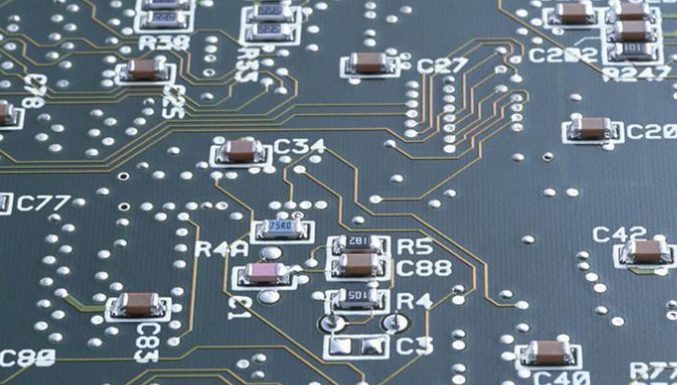PCB tool CNC drill bit selection
Drill bit parameters should pay attention to the following 6 points
Types and geometric shapes of drill bits
material
Take the knife and put the knife
accuracy
Surface roughness
number of regrinds
Types and structures of drill bits
There are straight shank twist drills, fixed shank twist drills, and spade-shaped drills for drilling printed boards. Straight shank twist drills are mostly used in single-head drill presses. They can drill simple printed boards or single panels, and the drilling depth can be up to 10 times the diameter of the drill. In the case that the substrate stack is not high, the use of drill sleeves can avoid drilling deviation.
"Within the range of "Y", the depth of cracks, notches, pores and other surface defects shall not be greater than 0.0127mm, and the width shall not be greater than 0.0254mm. In the "X" = 1.5 diameter range, no cracks, gaps and pores are allowed.

The characteristic of fixed shank drills is that they can automatically replace the drills. High positioning accuracy, no need to use drill sleeves. Large helix angle, fast chip removal speed, suitable for high-speed cutting. Within the full length of the chip flute, the diameter of the drill bit is an inverted cone, and the friction with the hole wall during drilling is small, and the drilling quality is high. There are three drill shaft diameters: Φ2, Φ3, and Φ3.175.
bit material
Printed board drilling drills generally use cemented carbide, because the epoxy glass cloth coated copper foil board wears very quickly to the tool. The so-called cemented carbide is made of tungsten carbide powder as a matrix and cobalt powder as a binder through pressure and sintering. It usually contains 94% tungsten carbide and 6% cobalt. Because of its high hardness, it is very wear-resistant, has a certain strength, and is suitable for high-speed cutting. But the toughness is poor and very brittle. In order to improve the performance of the cemented carbide, some use chemical vapor deposition of a layer of 5-7μm extra-hard titanium carbide (TIC) or titanium nitride (TIN) on the carbide substrate to make it have Higher hardness. Some use ion implantation technology to implant titanium, nitrogen, and carbon into the matrix to a certain depth, which not only improves the hardness and strength, but also these implanted components can migrate inward when the drill bit is reground. Some use physical methods to form a layer of diamond film on the top of the drill bit, which greatly improves the hardness and wear resistance of the drill bit.
The hardness and strength of cemented carbide are not only related to the ratio of tungsten carbide and cobalt, but also to the particles of the powder. The average size of the tungsten carbide phase crystal grains of the ultra-fine particles of cemented carbide drill bits is below 1 μm. This kind of drill has not only high hardness but also improved compressive and flexural strength.
Use of drill
The drill bit should be packed in a special packaging box to avoid vibration and collision.
When using, take out the drill bit from the packing box and install it into the collet chuck of the spindle or the tool magazine of the automatic drill bit replacement. Put it back in the box immediately after use.
To measure the diameter of the drill bit, use a non-contact measuring instrument such as a tool microscope to prevent the cutting edge from contacting with the mechanical measuring instrument and being bumped.
The elongation of the drill bit installed on the spindle should be adjusted uniformly, and the multi-spindle drilling machine should pay more attention to this.
Use a 40x stereo microscope to check the wear of the cutting edge of the drill.
Always check the concentricity of the spindle and the collet.
The clamping length of the fixed shank drill bit on the collet chuck is 4 to 5 times the diameter of the drill shank to be clamped firmly.
Always check the spindle presser foot. The presser foot contact surface should be horizontal and perpendicular to the spindle. The substrate stack, including upper and lower pads, should be firmly positioned and laid flat in a hole-to-slot positioning system on the workbench of the drilling machine. Adhesive tape is used to make the drill bit adhere to the chips, causing difficulty in chip removal.
The drill bit ordered by the manufacturer shall be randomly checked when 4% of the drill bit is in compliance with the regulations when entering the factory for inspection. And 100% of the nicks, scratches and cracks are inspected with a microscope of 10 to 15 times.
The drill bit is re-grinded in time, which can increase the number of drill bit re-grinding and prolong the life of the drill bit. Usually, measured with a tool microscope, the wear depth should be less than 0.2mm within the full length of the two main cutting edges. When regrinding, 0.25mm should be removed. The fixed shank drill bit can be reground 3 times, and the spade drill bit can be reground 2 times.
When the wear diameter is reduced by 2% compared with the original due to wear completely, the drill bit is useless. ipcb is a high-precision, high-quality PCB manufacturer, such as: isola 370hr PCB, high-frequency PCB, high-speed PCB, ic substrate, ic test board, impedance PCB, HDI PCB, Rigid-Flex PCB, buried blind PCB, advanced PCB, microwave PCB, telfon PCB and other ipcb are good at PCB manufacturing.